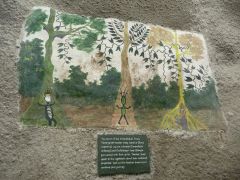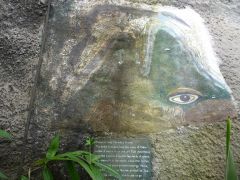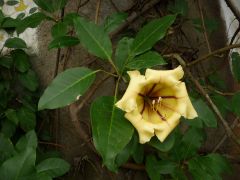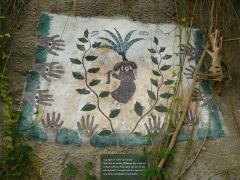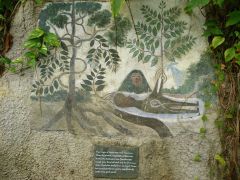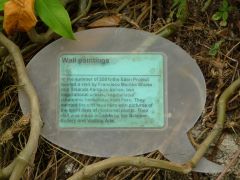-
Posts
1,772 -
Joined
-
Last visited
-
Days Won
13
Profile Information
-
Gender
Male
-
Country
New Zealand
-
Interests
Plants/Nature, Music, Hiking, Maths, Everything
Previous Fields
-
Climate or location
New Zealand
Recent Profile Visitors
The recent visitors block is disabled and is not being shown to other users.
CβL's Achievements
Newbie (1/14)
-
The local garden centre had a single A. bidwillii - so it's become the first tree that we've planted on our block Just need to get another 9~ now
- 10 replies
-
- bunya pine
- bunya nut
-
(and 1 more)
Tagged with:
-
Did you end up going? I'd be keen for some seeds if you did (happy to pay).
- 10 replies
-
- bunya pine
- bunya nut
-
(and 1 more)
Tagged with:
-
Awesome thank you - happy to pay or send some other seed in exchange
- 10 replies
-
- bunya pine
- bunya nut
-
(and 1 more)
Tagged with:
-
I would be interested if anyone is able to gather seed from A. bidwillii and post to NZ. There are a few fruiting trees available in NZ, but I'm unsure whether those that fruit are being pollinated by other Araucarias (I think it's unlikely, but it's not a risk I want to take if I'm going to invest 25+ years to growing the tree).
- 10 replies
-
- bunya pine
- bunya nut
-
(and 1 more)
Tagged with:
-
Please note that most permaculture places prefer the sterile plant (Bocking 14 for example), which only spreads via roots. A random comfrey plant can spread by seed and then you'll have it everywhere, and it also may not have the hybrid vigour of Bocking 14.
-
Here's the info on Acacia grafting: https://www.agriculture.purdue.edu/fnr/htirc tropical/pdf/Pubs/Nelson_koa_graft.pdf Grafting is not just about growth speeds, but disease resistance and soil tolerance too . I'm thinking I'll give it a shot, but I don't really know what I'd bother with grafting on. Also since I first asked, I've settled on Castanospermum australe as another Aussie nitrogen fixer I'll be planting. Can be eaten, although it's apparently a huge faff.
-
Yeah I think it can get weedy in NZ too. But luckily it doesn't do well in established forest, so as long as there's natives about it shouldn't establish. Another thing that I've read you can do is to graft acacias. So I could quite probably grow another acacia on a melanoxylon rootstock to get the resistance to the boggy ground. I was hoping there were some other acacias similar to melanoxylon to get a bit of diversity though.
-
Hi folks, Acacia melanoxylon grows well at our site. I used to hate it, but the fact the timber is so good, and it fixes nitrogen, and it grows so fast have made the damn tree grow on me. I was wanting to know about any other acacias which will grow in a wet NZ climate approx USDA 9b? The area gets about 2.2m of rain per year (+- 20cm) spread evenly with no real dry season, and temperature mostly stays between 5 and 20 degrees the whole year (with forays down to -1 and 25 degrees respectively). The soil drains okay from what I can tell, but perhaps best to think of it as a bit swampy. Any ideas for other Australian natives, that fix nitrogen, and ideally have another use (e.g. edible seeds/fruit)?
-
Hey folks - long time no see. I have been very busy, and so not had much time for posting here (in fact I'm supposed to be at work right now). I've still been learning about plants as much as I can, although more native plants and useful plants.Here are some photos I thought you might enjoy of the wall paintings at the Eden Project (http://www.edenproject.com/) - drawn by two visiting curanderos. I hope everyone is well! Kind regards,-CBL
-
-
Long time no word. I hope everyone is doing great! I am missing my cacti garden and my country so much (and you guys too ). There's a few trees over here that I really like (I love oaks and yews), but so far it's not the same. Something really special about green leaves all year round. Here's a photo of my cacti garden: And here is all I have over here so far (1 Terscheckii brought from a random garden centre in Wales, and an unrooted Sceletium Joubertii). Wahhhhhhh ;_;
-
In my opinion, it's actually taking the easy way out by running away into the bush. Giving up on the problems in the world, leaving everyone else to their fate to focus on your own. Maybe you're fine with that. But if you somehow think you're doing the world a favour, then as soon as you think about it more you'll see it's not the case. If you want to do some good for the world, and live in the wild - then be a damn forest ranger. There are jobs in NZ where you live alone in an isolated area looking after it. We went to a place up in the hills of Coromandel and the forest ranger had her dog, her privacy, and was doing some measure of good too. Anyway. - You don't seem to have thought about the material of your clothing. Avoid cotton for anything that will "move" (shirts, pants, underwear, etc). It's among the least durable of all fabrics, and it dries out very poorly (and it's heavier than a corresponding synthetic product). Nylon is extremely tough. Polyester is okay too. I guess if you can find a campsite and make 3-4 trips to stock it up, you wouldn't need to worry about the weight requirement. - The difference between a camping mat, and straight on the ground is close to 10 degrees in extra heat. Plus it helps keep your sleeping bag dry. I would consider it strongly. - Start "preparing yourself" for the food you will eat now. See how enjoyable it is to eat raw food when you accidentally tip over your fuel container, or just get sick/injured and can't walk into town to re-fuel. - Get properly fit and hiking-trained before going. Don't bullshit yourself on this one. - Think deeply about the medical kit - don't just buy a standard one and hope it'll have what you need. Some things are very useful but are never included (painkillers can be useful if you're in a lot of pain, but need to get to the town - drug yourself and away you go, maybe you prefer superglue instead of sutures, rather than toothpaste a more potent toothpowder, etc) - Count on your equipment failing/getting lost/stolen, etc. Being outdoors is not about relying on your equipment, but about relying on your skills and knowledge.
-
What is the veracity of this tale? Skull Mushroom, Mount Osore, Japan The Skull Mushroom is one of the most unique mushrooms only grows at the Mount Osore in Aomori Prefecture in Japan. It is called “skull” because the cap of this mushroom produces the pattern resembles a pair of human skulls in the back and front. This large species (12.5 inch) is called Oh-dokuro-dake (lit. Big Skull Mushroom) . Hime-dokuro-dake (lit. Princess Skull Mushroom) is smaller and Oni-dokuro-dake (lit. Devil Skull Mushroom) is orange red. This bizarre-looking mushroom has been used by Itako (female shamans who are also healer, and exorcist at Mount Osore) for many centuries for its magical hallucinogenic medicinal purposes and spiritual rituals. Mysteriously, unusually large numbers of skull mushrooms sprang out at Mount Osore after The 2011 Tōhoku earthquake, officially named the Great East Japan Earthquake (東北地方太平洋沖地震, とうほくちほうたいへいようおきじしん, lit. North Eastern Japanese Earthquake, 9.0 magnitude, ) and tsunami of March 11, 2011, 14:46 Japan Standard Time, which caused over 15, 000 deaths in Japan. Many faithful and spiritual locals consider this extremely rare paranormal phenomena as those people killed by this earthquake reincarnated into this special mushrooms for guarding the Gate of Hell at mount Osore, so that this earthquake’s victems would all go to Budddah’s land and the Heaven. The last time when this many skull mushroom sprang out was happen in the fall of 1923, which was only a month after the Great Kantō Earthquake (関東大震災, Kantō daishinsai) struck the Kantō plain on the Japanese main island of Honshū at 11:58:44 am JST on September 1, 1923, which was the deadliest earthquake ever to strike Japan up until this year’s Tōhoku Earthquake. For this year’s Itako Taisai festival to be held at the Bodau-ji Buddhist Temple at Mount Osore on July 20, 2011, unlike previous years, extremely large number of skull mushrooms are scheduled to be used for the ritual called kuchiyose, which seasoned itako claim to summon the souls of the dead, and deliver messages in their voices for faithful followers. Note1: Mount Osore (恐山, Osorezan) is a region in the center of remote Shimokita Peninsula of Aomori Prefecture, Japan. According to popular mythology, Mount Osore (literally "Mount Fear") marks the entrance to Hell, with a small brook running to the neighboring Lake Usorisan that is equated to the Sanzu River, the Japanese equivalent to Styx. The reputation is not surprising, given that the very volcanically-active site is a charred landscape of blasted rock filled with bubbling pits of unearthly hues and noxious fumes. Note2: An itako is a traditional, blind, usually female shaman from northern Japan. Itako are said to have the ability to communicate with the dead, even to evil spirits due to their intense spiritual power. They also had the power to remove evil spirit from one's body mind. Usually, older Itakos are more powerful than the new Itakos. Note3: The Bodai-ji ("Bodai Temple") presides over Mount Osore and organizes the area's main event, the twice-yearly Itako Taisai festival. The grand festival is held over a period of five days beginning on July 20. In a ritual called kuchiyose (口寄せ), blind mediums known as itako claim to summon the souls of the dead and deliver messages in their voices. Note4: The 1923 Great Kantō Earthquake (関東大震災, Kantō daishinsai) struck the Kantō plain on the Japanese main island of Honshū at 11:58:44 am JST on September 1, 1923. Varied accounts hold that the duration of the earthquake was between 4 and 10 minutes. The Kantō quake killed between 100,000 and 140,000 people, making it the deadliest earthquake ever to strike Japan which was the deadliest earthquake ever to strike Japan up until 2011 Tōhoku Earthquake. The quake had a magnitude of 7.9 on the Richter scale, with its focus deep beneath Izu Ōshima Island in Sagami Bay. http://www.flickr.com/photos/museumofworldwonders2/5725108088/
-
Hey guys. Thinks are going good over here. Still getting settled in. Not many plants though lately. I miss our end of the world (except now that apparently you guys are getting sprayed by Japan's radiation ). I hope everyone is doing well, and that spring is fueling some hella growth for all things green or red on the inside. Anyway, keep well - miss you all.
-

Any ideas on this columnar cactus?
CβL replied to Jox's question in Cactus & Succulent Identification
Looks quite a bit like a Haageocereus. Following that family tree might provide some hints.


